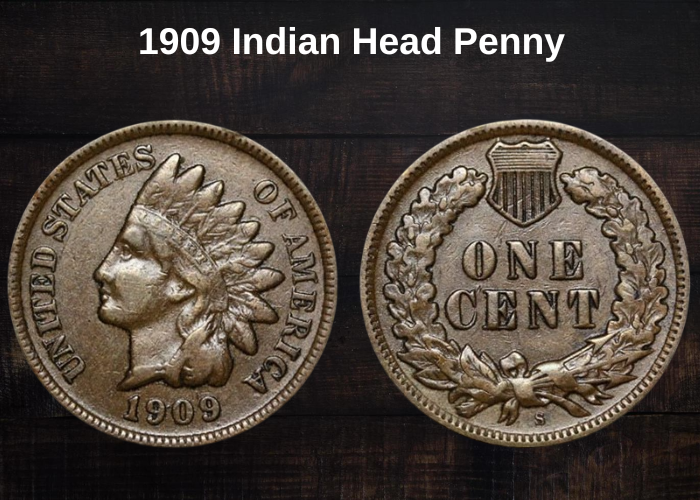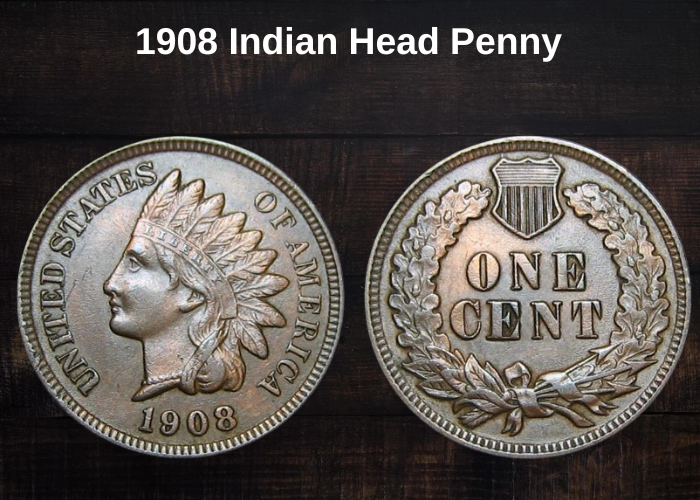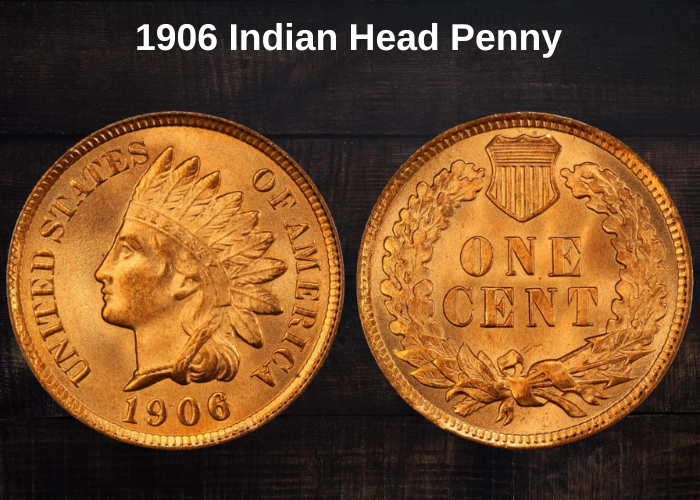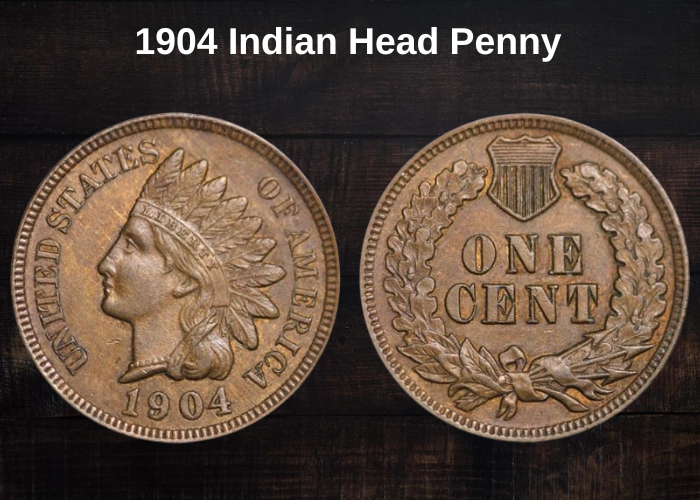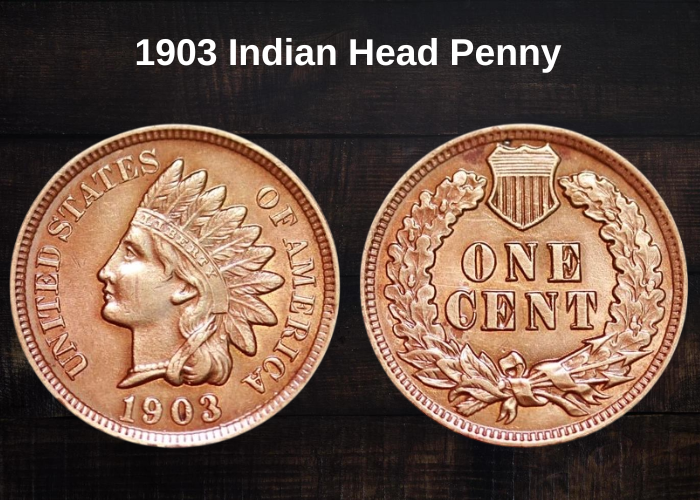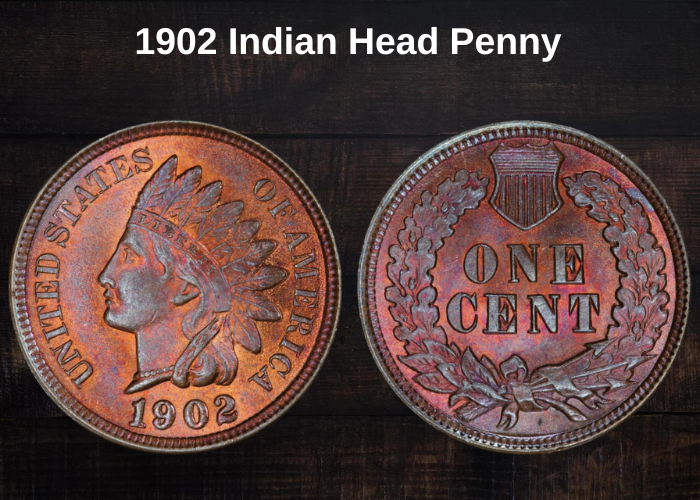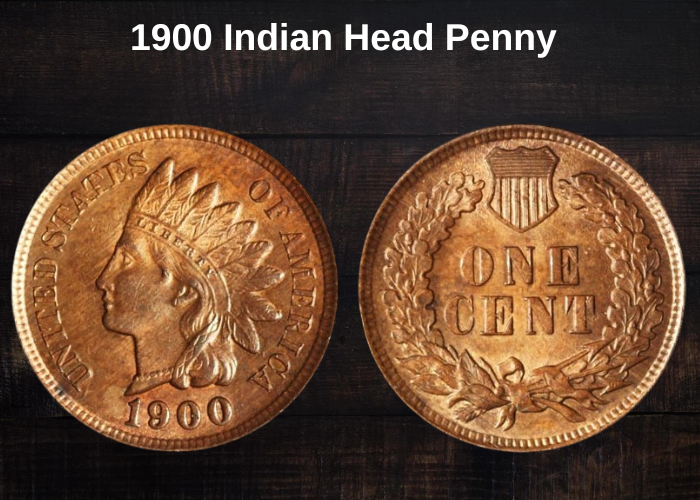The 1905 Indian Head penny holds historical significance, as it was introduced in an era when working-class Americans earned just 10 cents per hour, only 50 years after the Large Cents were deemed too large for everyday use. As a result, the U.S. Mint began producing Small Cents in 1856, and the Indian Head cents came into circulation three years later. Today, these coins are valuable collectibles cherished by numismatists.
1905 Indian Head Penny Value by Condition:
| Condition | 1905 No Mint Mark Penny Value |
|---|---|
| Good | $2 |
| Very Good | $2 |
| Fine | $5 |
| Very Fine | $9 |
| Extra Fine | $16 |
| AU (About Uncirculated) | $36 |
| MS 60 | $50 |
| MS 63 | $90 |
| PR 63 (Proof) | $285 |
Note: The listed values are for brown-graded coins.
History of the 1905 Indian Head Penny
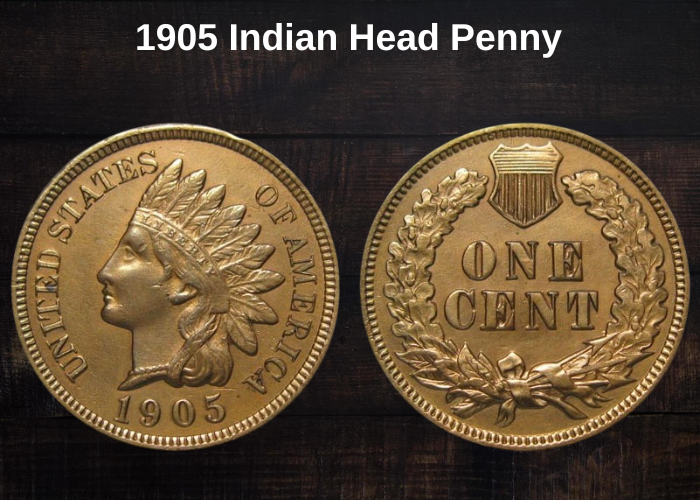
James B. Longacre’s design for the Indian Head penny became one of the most iconic and beloved coin designs in American history. These coins were closely tied to the national expansion and had a lasting connection to America during the decades of their circulation. They were first issued just before the Civil War, and at that time, the addition of national character on coins held significant meaning for the American public. Contrary to popular belief, the figure on the obverse was not an Indian, but rather Lady Liberty wearing a tribal headdress.
1905 Indian Head Penny Types
| Location | Year | Minted |
|---|---|---|
| Philadelphia | 1905 penny | 80,717,011 |
| Philadelphia | 1905 proof penny | 2,152 |
| Total | **/ ** | 80,719,163 |
After 50 years of production and multiple design changes, the U.S. Mint replaced Indian Head cents with Lincoln pennies in 1909 to celebrate the 100th birthday of the 16th President. Despite this change, the beautiful Indian Head coins remain highly sought-after collectibles to this day.
Features of the 1905 Indian Head Penny
The 1905 Indian Head penny is part of the standard circulation coins minted between 1859 and 1909, based on the design by James Barton Longacre. In 1864, the U.S. Mint made changes to the coin’s size and composition, but these modifications did not diminish the coin’s beauty or popularity. The Indian Head penny remained a beloved symbol of American currency during its long circulation.
The obverse of the 1905 Indian Head Penny
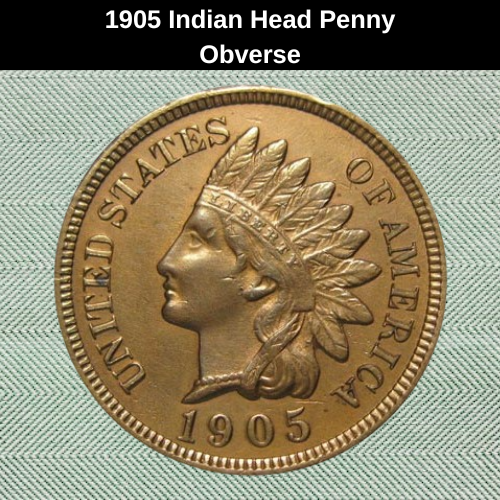
James Barton Longacre’s design for the Indian Head penny was intended to honor the Native American people who endured much hardship following the arrival of Europeans in the New World. Paradoxically, Longacre did not use an actual Native American as a model; instead, he based his design on the face of his daughter.
The “Indian” depicted on the coin wears a traditional tribal headdress with the inscription LIBERTY on it. Around the rim of the coin is the inscription UNITED STATES OF AMERICA, separated into two parts, with the year of minting placed at the bottom.
The reverse of the 1905 Indian Head Penny
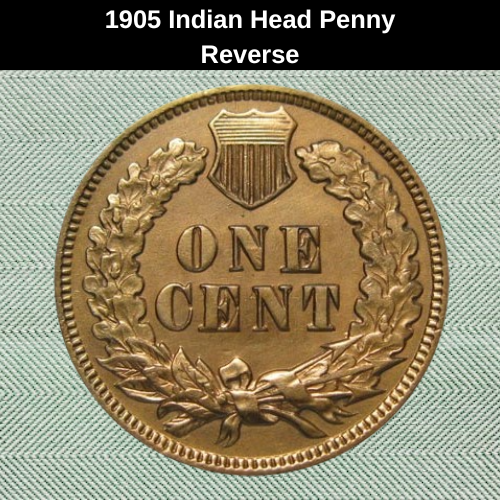
The elegant reverse of the Indian Head penny features an oak wreath, symbolizing strength and endurance, and three arrows tied together with a ribbon, representing readiness and defense. At the top of the wreath is a shield, with thirteen vertical strips inside it, symbolizing the original thirteen colonies. The denomination ONE CENT is inscribed in capital letters and placed in the center, split into two lines.
1905 Indian Head Penny Details
- Face value: One cent ($0.01)
- Coin diameter: 19.05 mm (0.75 inches)
- Shape: Round
- Coin thickness: 1.47 mm (0.057874 inches)
- Composition: An alloy of 95% copper with traces of zinc or tin
- Coin weight: 3.11 g (0.10970 ounces)
- Edge: Plain
Other features of the 1905 Indian Head Penny
The 1905 Indian Head pennies are one-cent coins composed of a 95% copper alloy. They have a thickness of 1.47 mm (0.057874 inches) and a standard diameter of 19.05 mm (0.75 inches). Each coin weighs 3.11 g (0.10970 ounces).
1905 Indian Head Penny Grading
Grading the 1905 Indian Head cents can be challenging, especially since these coins are nearly 120 years old. Most are worn from circulation, but high-quality coins in excellent grades are in demand. In such cases, professional grading is highly recommended, especially if you plan to sell one at auction.
Here’s a general grading scale for the 1905 Indian Head pennies:
| Grade | Description |
|---|---|
| 1 | Basal State-1 |
| 2 | Fair |
| 3 | Very Fair |
| 4, 5, 6 | Good |
| 7, 8, 10 | Very Good |
| 12, 15 | Fine |
| 20, 30 | Very Fine |
| 40 | Extremely Fine |
| 50 | About Uncirculated |
| 60 | Mint State |
| 65 | Mint State |
| 70 | Mint State |
To determine the exact value of your coin, it’s crucial to check against a reliable grading guide. Grading is an essential step in understanding your coin’s worth.
1905 Indian Head Penny Value Guides
In 1905, only one mint issued Indian Head cents: the Philadelphia Mint. The total mintage for the year was 80,719,163 coins, including over 2,000 proofs made specifically for collectors. The majority of these coins were released into circulation and spent years in everyday use.
1905 No Mint Mark Indian Head Penny Value
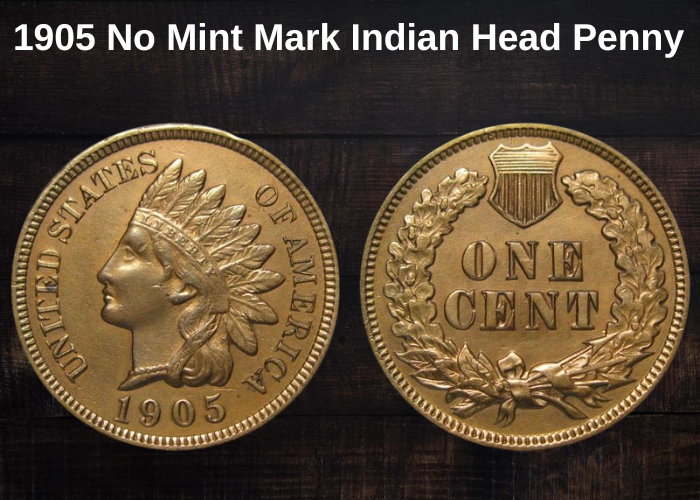
In 1905, the Philadelphia Mint produced 80,717,011 Indian Head pennies, most of which were circulated for decades. Over time, these coins have shown varying degrees of wear, often reflected in discoloration, which plays a crucial role in their evaluation today.
Key Points on Value:
- Red-Coloration Pennies: These are the most sought-after and expensive in the set. However, their prices can vary greatly depending on their surface condition.
- MS 61: Around $75
- MS 62: Around $85
- MS 63: Around $165
- MS 64: Around $325
- MS 65: Around $650
- MS 66: Around $1,700
- MS 67: These are extremely rare, with an estimated price of $17,000. One MS 67 Indian Head penny sold for $19,975 at an auction in April 2013.
- Brown Pennies: These are less desirable, so their prices are significantly lower.
- Circulated Condition: $2 to $46
- Perfect Condition: More affordable than red pennies, despite their age.
- Red-Brown Pennies: These coins have a mix of red and brown shades. Their prices typically range from $55 to $850, with one exceptional red-brown MS 66 penny selling for $1,726 at Heritage Auctions in October 2011.
Costliest Brown Indian Head Penny: The highest-priced 1905 brown penny in MS 65 grade was purchased for $960 in June 2022.
For coins ranked between MS 60 to MS 66, the price range is typically from $50 to $500. If you’re looking for a great coin dealer, be sure to check reviews and ratings to find the best one near you!
1905 proof Indian Head Penny Value
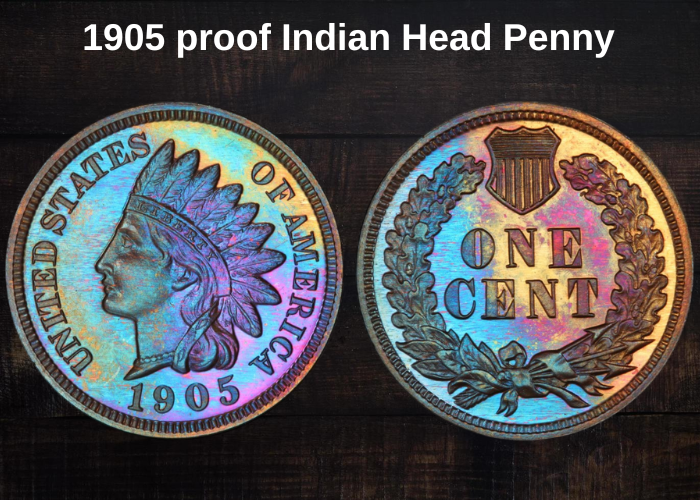
In 1905, the Philadelphia Mint issued 2,152 proof Indian Head cents, specifically intended for collectors. These coins come in three color combinations, which directly impact their price range.
Price Ranges by Color and Grade:
- Brown Proof Cents (PR 60 to PR 66):
- Price Range: $135 to $2,000
- The least attractive brown coins are generally more affordable, with the highest-graded PR 66 coins approaching $2,000.
- Exception: A brown 1905 PR 67 penny sold for $3,335 at Goldberg Auctioneers in 2005.
- PR 67 with CAM quality: The most valuable brown coin, which sold for $33,600 in November 2024.
- Red-Brown Proof Cents:
- Red-brown pennies are more valuable than their brown counterparts.
- Price Range: $165 to $650
- PR 66 Red-Brown: Around $2,150
- PR 67 Red-Brown: Around $5,250
- Highest Known Grade: A red-brown coin in PR 67 sold for $5,405 in May 2018.
- Red Proof Cents (Most Collectible):
- These are the most sought-after Indian Head pennies, with collectors willing to pay premium prices.
- Price Range:
- PR 60: $235
- PR 61: $250
- PR 62: $275
- PR 63: $350
- PR 64: $650
- PR 65: $1,150
- PR 66: $2,250
- PR 67: $8,000
- Highest Price: One red penny in PR 67 sold for $11,750 in March 2014, surpassing even the best estimations.
In summary, red and red-brown proof pennies are highly valuable, with some selling for exceptional amounts at auctions. As with all collectible coins, higher grades significantly impact the price, making top-tier specimens much more expensive.
Rare 1905 Indian Head Penny Errors List
The 1905 Indian Head penny collection contains a variety of errors that attract collectors. While many of these error coins are worth more than standard pieces, even newcomers or those on a budget can find some of these unique specimens within their price range. Let’s take a look.
Clipped planchet
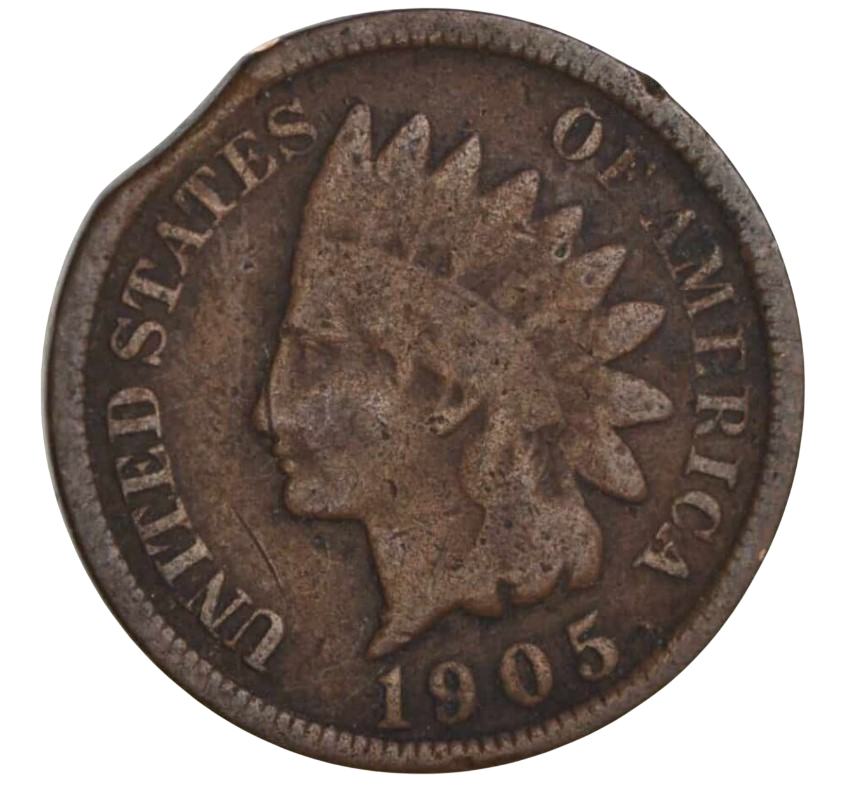
Coins with this error are the result of the dies cutting off a portion of the planchet’s edge during striking. This occurs when the blank metal piece is not correctly positioned during minting. The great thing about this error is that it’s easy to spot, and you can often purchase a coin with this imperfection for around $90 to $100, depending on how noticeable the error is.
Doubled die obverse
The DDO (Doubled Die Obverse) error on 1905 pennies occurs when the die is flawed, resulting in a doubled image on the coin. These coins are always sought after by collectors, but those with visible errors to the naked eye are the most preferred.
Typically, a 1905 penny with a DDO error is valued around $45, though coins with less noticeable errors—requiring a magnifying glass to detect—tend to be priced lower.
Off-center
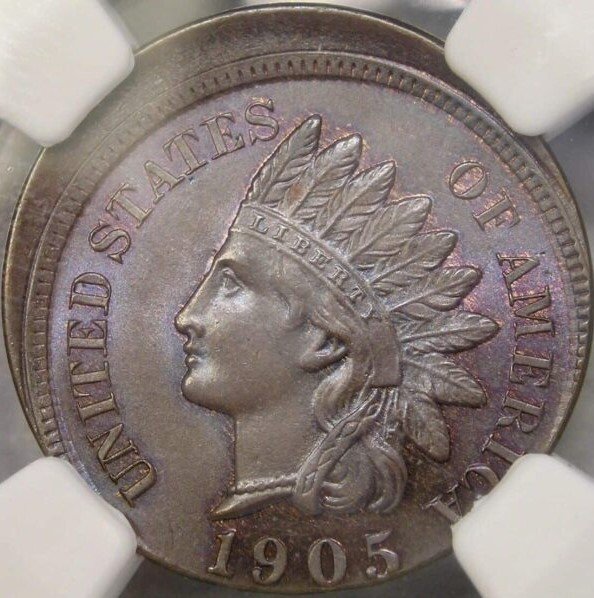
The 1905 penny with an off-center strike occurs when the planchet is incorrectly positioned during the minting process, resulting in a misaligned design. If the design is missing between 30% to 50%, these coins are generally valued around $450 to $460, making them highly collectible due to the noticeable error.
Re-punched date
Coins with a re-punched date (RPD) error occur when the minting date is struck twice to correct an initially misaligned or improperly positioned date. The visibility of this defect varies depending on the coin’s condition and wear. The most expensive example was a brown 1905 XF 40 RPD coin, which sold for $396 in 2013.
Die breaks
This common error happens when worn-out dies are used during minting. As the old die strikes the coin, it results in a defective image or lettering. When purchasing such coins, it’s important to be cautious. Minor errors can increase a coin’s value, but larger imperfections can significantly impact its appearance, reducing its price.
Strike-through
To achieve the best possible design imprint on coins, it’s essential to have a clean die and planchet during the minting process. If dust particles or debris are caught between them, it can cause parts of the design to be missing, either partially or entirely.
The value of these error coins largely depends on the severity of the imperfection. Typically, you can expect to pay around $20 to $30 for these types of coins, depending on how noticeable the missing design is.
FAQ about the 1905 Indian Head Cent
What makes Indian Head cents from 1905 rare?
While over 80 million 1905 Indian Head cents were minted and circulated, these coins are generally common. However, red specimens in high uncirculated grades are rarer and significantly more valuable.
Which are the most expensive 1905 Indian Head cents in the set?
- The 1905 PR 67 Indian Head cent with CAM quality sold for $23,000 in July 2009 (Heritage Auctions).
- The red 1905 MS 67 Indian Head cent sold for $19,975 in April 2013 (Heritage Auctions).
- The red 1905 PR 67 Indian Head cent sold for $11,750 in March 2014 (Stack’s Bowers).
- The red-brown 1905 PR 67 Indian Head cent sold for $5,405 in May 2018 (Legend Rare Coin Auctions).
- The brown 1905 PR 67 Indian Head cent sold for $3,335 in February 2005 (Goldberg Auctioneers).
- The red-brown 1905 MS 66 Indian Head cent sold for $1,726 in October 2011 (Heritage Auctions).
- The brown 1905 MS 65 Indian Head cent sold for $960 in June 2022 (Stack’s Bowers).
- The brown 1905 XF 40 Indian Head cent with a re-punched date sold for $396 in July 2013 (Great Collections).
How much is the 1905 Indian Head cent worth?
The value of 1905 Indian Head cents depends on the coin’s condition and color:
- Red coins range from $80 to $1,540 depending on grade, with MS 67 coins potentially valued between $15,000 and $18,750.
- Brown coins in circulated condition are typically worth $1 to $30, while those in mint state range from $32 to $1,680.
- Red-brown coins are valued between $50 and $2,100.
What Indian Head cents are the costliest in the series?
- 1864 PR 65 Indian Head cent with L On Ribbon error: $161,000 (2011, Heritage Auctions).
- 1877 MS 66 Indian Head cent: $149,500 (2007, Heritage Auctions).
- Red 1902 MS 68 Indian Head cent: $144,000 (2022, Stack’s Bowers).
- 1872 MS 66 Indian Head cent: $126,500 (2007, Heritage Auctions).
- Red 1899 MS 68 Indian Head cent: $108,000 (2019, Heritage Auctions).
- DCAM 1897 PR 67+ Indian Head cent: $108,000 (2021, Stack’s Bowers).

